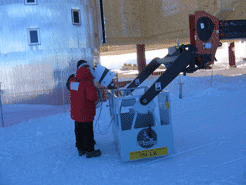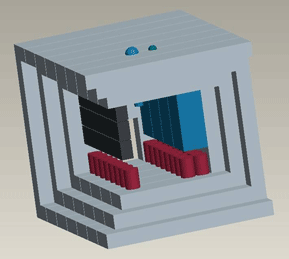Cold Regions Heat Transfer
Experience
Gary Phetteplace has extensive experience in cold regions heat transfer. Much of this has dealt with buried utilities (see our Heat Transfer in Soil Systems page) but he also has experience in building envelope systems in cold and extreme cold climates. Gary Phetteplace developed the methods and systems used successfully in temperatures down to -50 °F to conduct several infrared surveys of the building envelope at the US South Pole Station, Antarctica. Gary Phetteplace has also been involved in cold regions heat transfer as it applies to humans. He was part of the oversight group for development of the new wind chill factors and has also done work on cold weather impacts on the performance of humans. He developed and taught in part the University of Alaska - Anchorage’s graduate course ME A685, Arctic Heat and Mass Transfer.

Infrared camera set-up for survey work at the South Pole Station where survey temperatures were as low as -50 °F. The IR camera is within the insulated white enclosure, the cabling is used to transfer the video display of the camera to a chase vehicle where the operator is stationed (see image above right). Power is also supplied from the chase vehicle and the camera is remotely controlled from there as well via the cabling.


